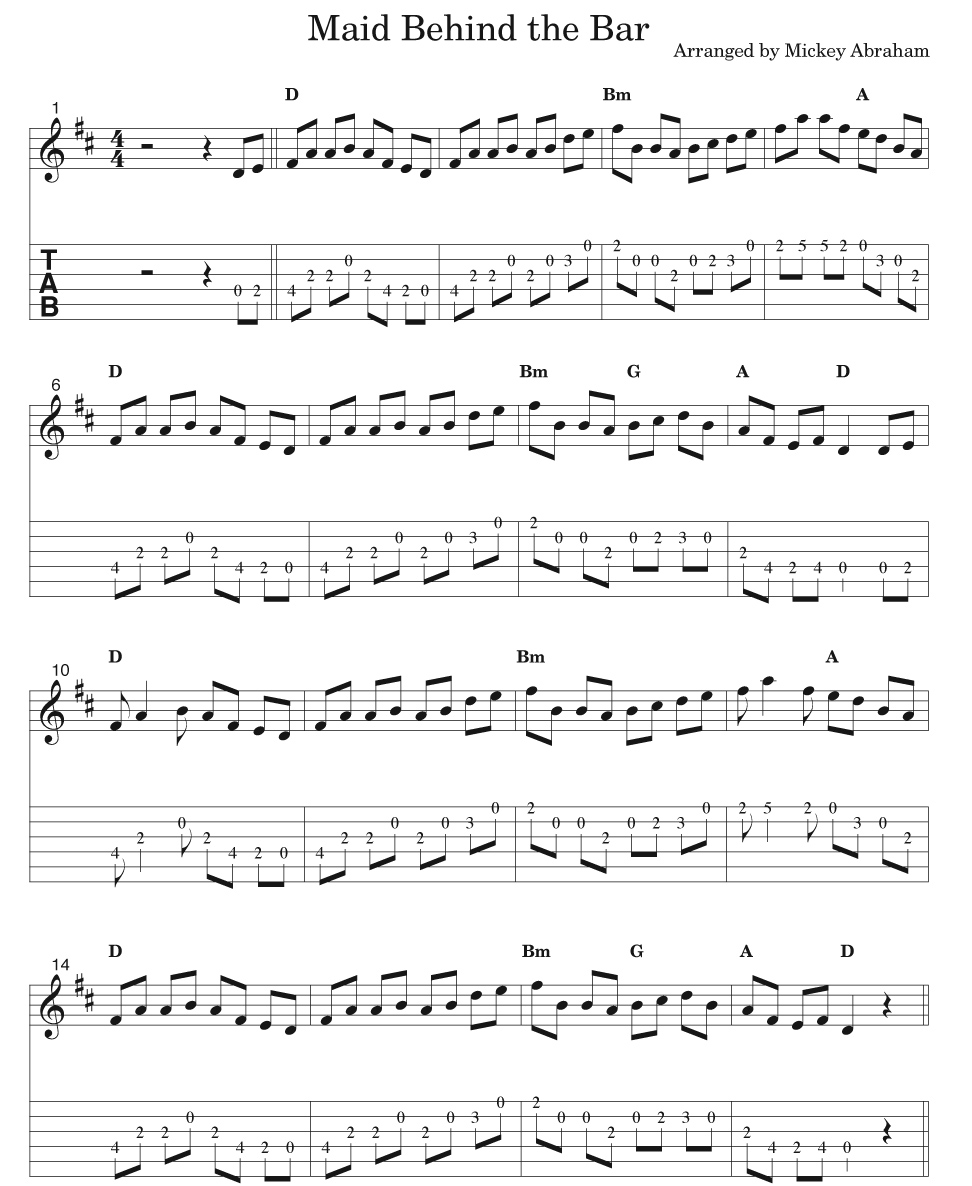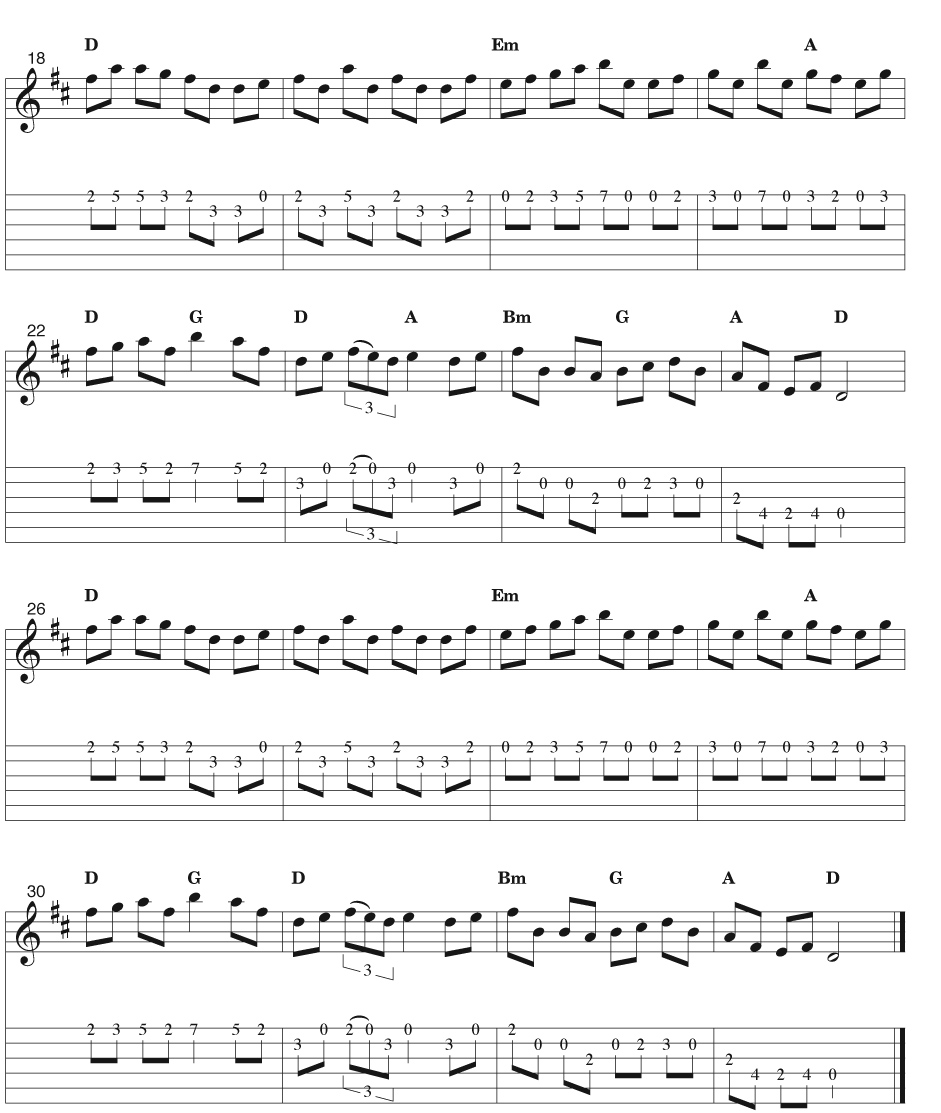|
September 2009 Free Flatpicking Lesson
from
Flatpicking Guitar Magazine
"Maid Behind The Bar"
Arranged by Mickey Abraham
Welcome, once again, to FGM’s free e-lesson. Every month, when
you click here, you will find a new tune, musical concept, or guitar
exercise designed to improve your skills as a flatpicker. This month I
present to you a beautiful Irish tune called “The Maid Behind the Bar.
This tune is
considered a reel. A reel is a folk dance as well as a style of tune
-- In Scottish dancing, the reel is one of the four traditional dances,
the others being the jig, the strathspey, and the waltz. At
traditional Irish sessions it is very common to medley tunes together
often switching keys to add harmonic interest from tune to tune. You
may hear a “set of reels” or a “set of jigs.” In the months to come, I
will teach you a couple more great reels and we will be on our way to
flatpicking a set of Irish reels.
Being in the key of
“D,” I flatpick this melody out of second position. When picking a D
major scale in open position the first fret is never used -- so, it
seems logical to me to play all the second fret notes with my index
finger. When the fifth fret appears you should play this note with
your pinky. In the “B” section there is one spot where you must
quickly jump your pinky to the seventh fret and then use your pinky
again on the very next note (fifth fret). Other than that, the entire
tune is picked with ease out of second position
I love this tune
because of it’s melodic use of eighth notes. The melody is very busy
with notes and yet it has a very lyrical quality. The notes of the
tune are not extraneous filler. In order for us to achieve the best
sound when playing tunes that have extended eighth note passages, it is
important to accent the first and third beats of each measure with a
heavier down stroke. Listen to the mp3 and you will notice a pulse to
my eighth notes. I am purposely striking the 1 and the 3 with more
force. Further, I like to put a slight swing into the eighth notes,
giving the tune a happy bounce. Make sure you play every note clean,
for the chain of eighth notes is only as strong as it’s weakest link.
When playing back-up to
this tune you will find some sections that switch chords every two
beats. This happens first at the four chord turnaround to the “A”
section - Bm, G, A, D. If you are unsure of how to play a cool Bm I
suggest using a Bm7. It is easier and sounds better (in most cases)
than a tradition Bm bar shape. Put your index on the 2nd fret of the A
string. Then, put your middle on the 2nd fret of the G string.
Finally, put your pinky (or ring) on the 3rd fret of the B string --
make sure to mute the D string and don’t pay either of the E strings!
This is a popular voicing of a Bm7 chord and it sounds great when used
in conjunction with D, G, and A style chords. You may even notice that
this new chord shape has many of the same tones as your D chord.
Sometimes the chords come at you fast in this tune but they sound great
and are well worth the effort.
If you have any
questions, comments, or concerns on this e-lesson or if you have ideas
on what you would like to see here in future e-lessons, drop me a line
at
[email protected].


|